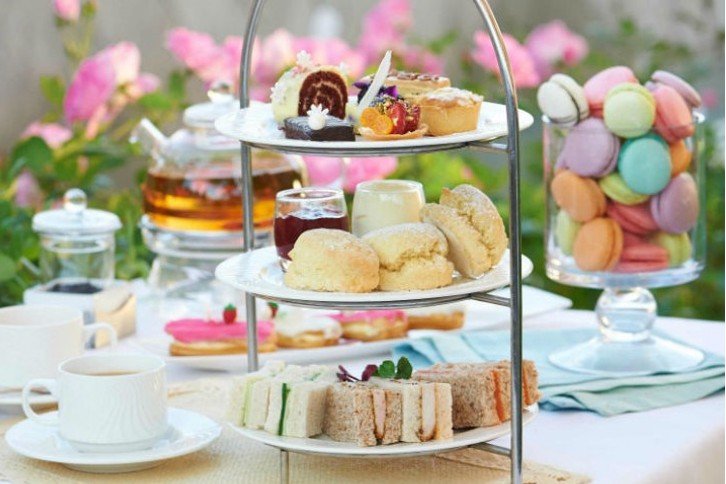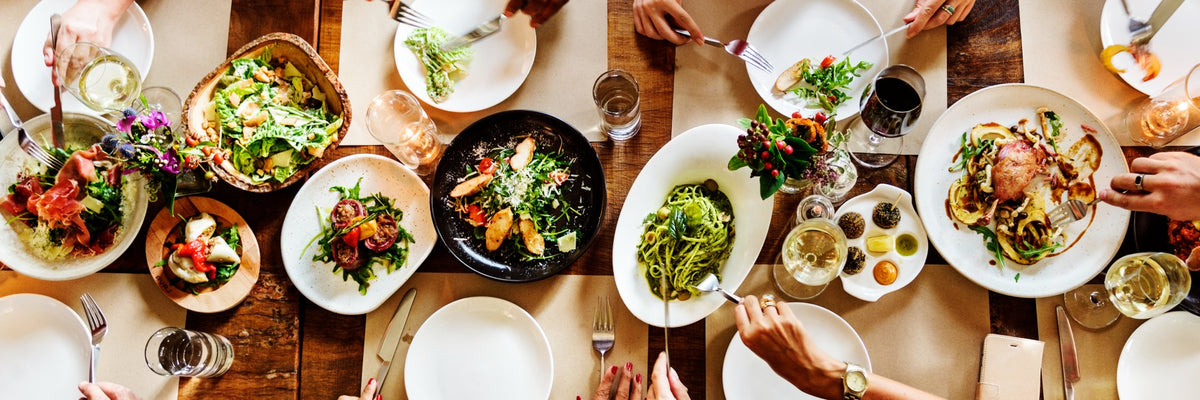
There is often confusion around the different ways in which one can "take tea." Additionally, the raging debate of milk before tea or tea before milk has been settled once and for all by royal butler Grant Harrold.
Afternoon tea:
This is a light meal typically eaten between 3:30 pm and 5 pm. A custom originating among the wealthy social classes in England in the 1840s. Delectable scones, tea sandwiches, and cakes are the hallmark of an afternoon tea, which is served in mid-afternoon. The Duchess of Bedford is widely credited as transforming afternoon tea in England into a late-afternoon meal served sometime between luncheon and dinner (formal) or supper (informal).
For the upper-class, afternoon tea was accompanied by thinly sliced and delicate, crustless tea sandwiches of cucumber or egg and watercress cut into small triangles or rounds and pressed thinly. Afternoon tea is also served with cakes and pastries such as Battenberg cake, shortbread cookies or Victoria sponge cakes. Scones with clotted cream, jam and fruit curds may also be served.
Think of afternoon tea as decadence for the social elite or upwardly mobile genteel ladies. Afternoon tea, also known as “low tea,” is most often taken at a low table, like a coffee table in the sitting room and has rigorous standards of etiquette associated with it.
High tea:
High tea is not at all a fancy tea, as many people believe. A high tea includes much more hearty fare, such as meat, fish, and egg dishes, as well as breads and sometimes desserts. High Tea is a name for the evening meal, usually associated with the working class and is typically eaten between 5 pm and 7 pm. In most of the United Kingdom, North and South Wales, English Midlands, Scotland, and in some rural and working-class areas of Northern Ireland people traditionally call their midday meal dinner and their evening meal tea. High tea gets its name from its tendency to be served at a high table, like a dining table or high counter, or bar at the end of the workday by the working class.
Cream Tea:
Cream tea is a snack most often associated with the West Country, i.e. Cornwall, Devon, Dorset and Somerset. It usually consists of scones, clotted cream or butter, strawberry jam, and of course, tea. In Australia, this is commonly referred to as Devonshire Tea.
Elevenses:
Elevenses is a short break taken at around 11 a.m. each workday to have tea and a light snack often with a selection of biscuits for dunking. Much like the coffee break in the United States but often a bit more structured and refined, of course. I think we need this tradition!
Milk before tea or tea before milk?
Observing upper class manners, one pours the tea into the cup and then adds the milk to the tea. If one were from the lower classes one would pour the milk into the cup, or mug, then add the tea. This is perfectly practical when you consider that at the dawn of tea drinking the lower classes had lesser quality pottery that could crack with the rapid change of temperature. Well-glazed more expensive porcelain does not crack in this manner.
Today this "milk before or after" divide still exists. However, according to Grant Harrold, once the Royal Butler to Queen Elizabeth, he has 'settled' the debate once and for all. Grant explains that since the 18th century, the 'proper' way of brewing is tea before milk. Like so much in Britain, it has always been a status and class thing.
- Pour the tea into the cup from a teapot.
- Add milk to the cup after the tea, never before. Milk should not be ice cold to avoid curdling.
- Stir back and forth - never use a circular motion and never touch the sides. Place the teaspoon at the “6 o’clock” position, and then gently move it to the “12 o’clock” position a couple of times. When done, place the teaspoon on the right side of the saucer, not on the tablecloth.
- Do not take sugar cubes with your fingers. Use sugar tongs.
- If using lemon in your tea do not leave the slice of lemon in the cup. Remove it before drinking.
- Sip from the cup, do not slurp!
- As for sticking your pinky finger out – another 'posh' myth. No pinky out.
So, whether you're a social butterfly yearning for an afternoon tea soiree or a hard-working soul seeking a hearty high tea after a long day, there's a perfect cuppa (and a set of etiquette guidelines!) waiting for you.
And while the "milk before or after" debate may have historical roots, following Grant Harrold's advice ensures a proper cup. So next time you steep a pot, remember the rich history and diverse customs surrounding this delightful beverage. Whether enjoyed solo or with company, a cup of tea offers a moment of relaxation and a chance to savor the simple things in life.
English Afternoon Tea Etiquette
Let's Get Cooking
For more culinary inspiration, be sure to visit our recipe page. Here, you'll find a diverse collection of delicious recipes for every taste, season and occasion.


